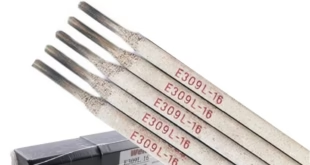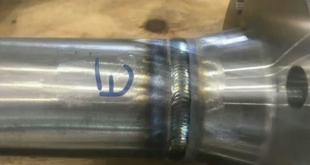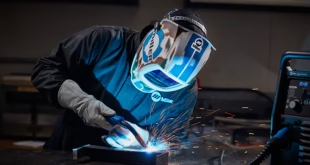2G 2F Welding Position – A Complete Guide
Welding is an essential process in manufacturing, construction, and various industries. One crucial aspect of welding is understanding different welding positions, as they determine the difficulty, technique, and outcome of the weld. Among these positions, the 2G and 2F welding positions are commonly used for structural and fabrication work. In this guide, we will explore these two welding positions, their differences, applications, techniques, and best practices.
Understanding Welding Positions
What Are Welding Positions?
Welding positions refer to the orientation of the workpiece and the welder when performing a weld. These positions influence how the molten metal behaves, affecting penetration, fusion, and overall weld quality.

Why Are Welding Positions Important?
Each welding position has its own challenges. Understanding them helps welders choose the right techniques and equipment, ensuring strong and durable welds. Positions also play a key role in welding certifications, which are required for professional welders in many industries.
What Is the 2G Welding Position?
Definition of 2G Welding Position
The 2G welding position (Horizontal Groove) involves welding a joint where the axis of the weld is horizontal. The workpiece is positioned vertically, and the weld is made along a horizontal plane.
Applications of 2G Welding
- Structural welding in buildings and bridges
- Pipe welding in the oil and gas industry
- Shipbuilding and heavy machinery fabrication
Challenges in 2G Welding
- Gravity can cause molten metal to sag, leading to improper fusion
- Requires steady hand movement to avoid undercutting
- Managing heat input to prevent excessive distortion
What Is the 2F Welding Position?
Definition of 2F Welding Position
The 2F welding position (Horizontal Fillet) involves welding a joint where one workpiece is positioned horizontally and the other is vertical, forming a T-joint.
Common Uses of 2F Welding
- Frame and chassis construction
- Manufacturing of storage tanks and pressure vessels
- General fabrication and repair work
Challenges in 2F Welding
- Achieving proper fusion at the root of the fillet weld
- Maintaining consistent bead shape and size
- Avoiding lack of penetration and porosity
Differences Between 2G & 2F
Positioning of the Workpiece
- 2G: The workpiece is vertical, and the welding is performed horizontally.
- 2F: The workpiece forms a T-joint with one part horizontal and the other vertical.
Electrode and Torch Movement
- 2G: Requires a controlled horizontal movement with attention to penetration.
- 2F: Involves a fillet weld technique where angle and bead size are crucial.
Difficulty Level
- 2G welding is often more challenging due to gravity affecting the molten pool.
- 2F welding is easier for beginners but still requires skill to achieve strong fillet welds.
Best Practices
Techniques and Best Practices for 2G Welding
Proper Workpiece Setup
- Ensure the joint is clean and free of contaminants.
- Use clamps to secure the workpiece in place.
Recommended Welding Techniques
- Use a weaving motion to ensure full penetration.
- Control travel speed to prevent undercutting.
Common Mistakes to Avoid
- Excessive heat input causing distortion.
- Incorrect electrode angle leading to weak fusion.
Techniques and Best Practices for 2F Welding
Workpiece Preparation
- Remove rust, paint, or oil from the welding area.
- Position the workpiece correctly for easy access to the joint.
Correct Welding Angles
- Hold the electrode at a 45-degree angle for proper fusion.
- Use a steady hand to control bead shape.
Avoiding Welding Defects
- Avoid rapid cooling to prevent cracks.
- Maintain a consistent travel speed for uniform welds.
Common Defects & How to Avoid Them
Porosity
- Cause: Contaminants or trapped gases.
- Solution: Clean the workpiece thoroughly and use proper shielding gas.
Undercutting
- Cause: Excessive travel speed or high amperage.
- Solution: Reduce speed and maintain a steady arc length.
Lack of Fusion
- Cause: Incorrect angle or low heat input.
- Solution: Adjust electrode position and increase heat input.
FAQs
What is the main difference between 2G and 2F welding positions?
2G welding is a horizontal groove weld with the workpiece in a vertical position, while 2F welding is a horizontal fillet weld with a T-joint configuration.
Which welding process is best for 2G welding?
Stick welding (SMAW) and MIG welding (GMAW) are commonly used for 2G welding due to their ability to provide deep penetration.
How can I improve my 2F welding technique?
Practice maintaining a consistent travel speed, using the correct electrode angle, and ensuring proper penetration to achieve strong welds.
What are the most common defects in 2G welding?
Common defects include porosity, undercutting, and lack of fusion. These can be avoided with proper technique, correct settings, and thorough workpiece preparation.
Is 2G welding harder than 2F welding?
Yes, 2G welding is generally more challenging than 2F welding due to gravity affecting the molten metal, making control more difficult.
Conclusion
Mastering the 2G and 2F welding positions is crucial for welders in various industries. Each position has its own challenges and requires specific techniques for optimal results. By understanding their differences, applications, and best practices, welders can improve their skills and produce high-quality welds.
 Welding of Welders All about Welding and Welders
Welding of Welders All about Welding and Welders



